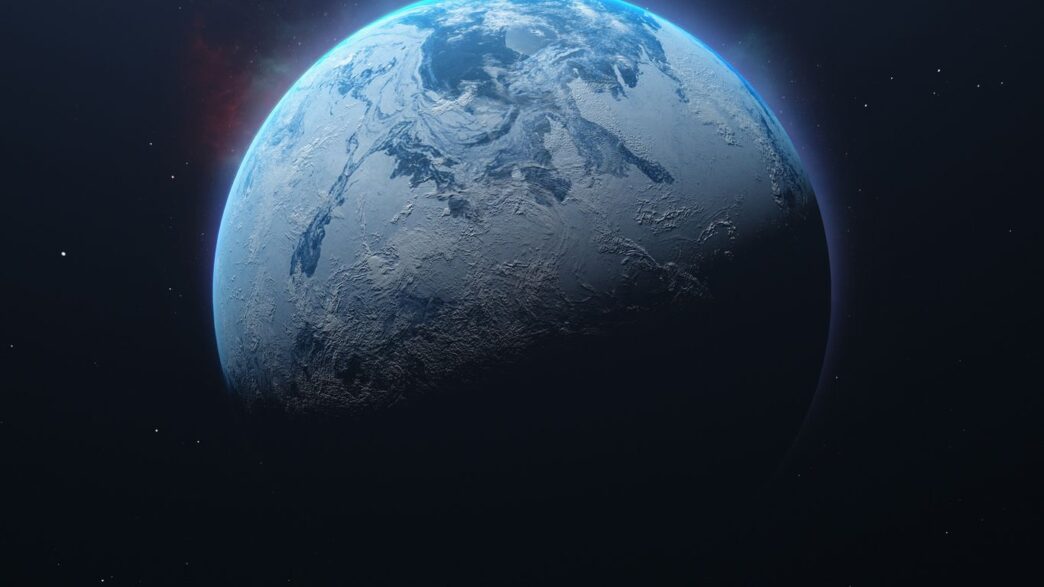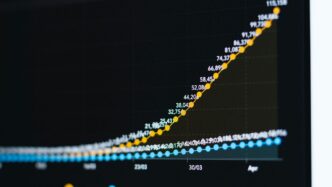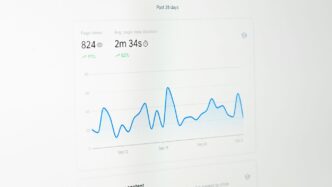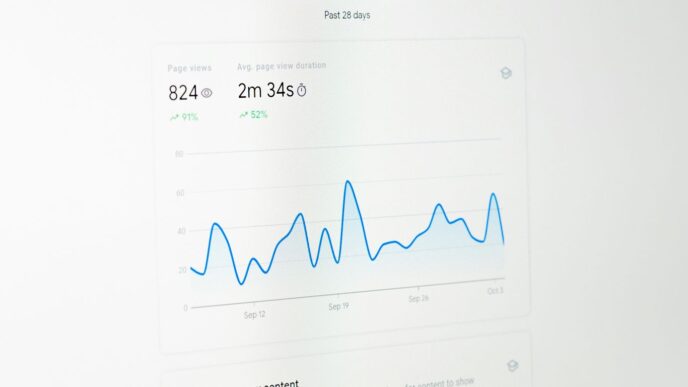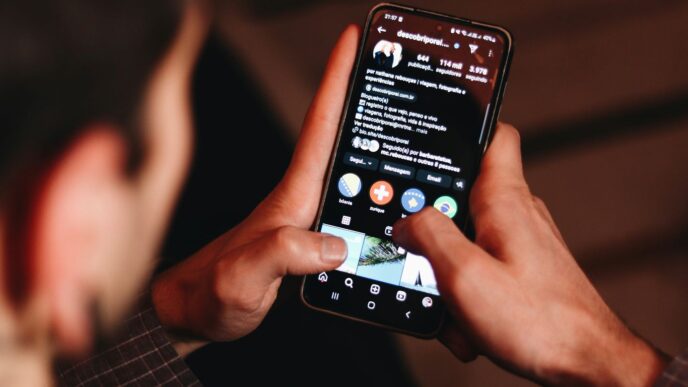Thinking about what will happen to Earth in 2030 might seem a bit far off, but honestly, the changes are already in motion. It feels like just yesterday we were talking about the year 2020, and now we’re looking ahead. Things are moving fast, and it’s kind of wild to imagine how much life could shift in just a few years. From how we work to how we live day-to-day, a lot is expected to be pretty different. Let’s break down some of the big trends that seem set to shape our world by then.
Key Takeaways
- The way we work is changing fast, with automation and AI taking on more tasks, but also creating new kinds of jobs. Remote work and the gig economy will likely be even more common, connecting people globally.
- Our daily lives will see big shifts, like more electric and self-driving vehicles, healthcare tailored to our individual genes, and education becoming super accessible through online tools.
- The global scene is moving towards a more spread-out power structure, meaning countries will need to work together more, though there’s always a chance for disagreements and conflict.
- Climate change will remain a major concern, bringing more extreme weather and potentially causing people to move. While efforts to reduce carbon emissions are happening, their full success is still uncertain.
- Technology like AI and augmented reality will become a bigger part of our lives, bringing exciting new experiences but also sparking important talks about jobs and fairness.
The Evolving Landscape Of Work And Technology
Alright, let’s talk about how our jobs and the tech we use are going to shift by 2030. It’s not just about new gadgets; it’s a whole change in how we earn a living and interact with our work.
Automation And The Future Of Employment
So, robots and AI are getting smarter, right? By 2030, this means a lot of the repetitive tasks we do now will likely be handled by machines. Think data entry, basic customer service, maybe even some manufacturing jobs. This isn’t necessarily a bad thing, though. While some jobs will disappear, new ones will pop up. We’re talking about roles focused on managing these automated systems, designing new AI, and jobs that require that human touch – creativity, complex problem-solving, and emotional intelligence. It’s going to be a big adjustment, and a lot of people will need to learn new skills to keep up.
The Rise Of Remote Work And The Gig Economy
Remember when working from home was a bit of a novelty? By 2030, it’s going to be way more common. Technology makes it easier than ever to connect with colleagues from anywhere. This also fuels the gig economy. More people will be working on short-term projects or freelance gigs rather than traditional full-time jobs. This offers flexibility, sure, but it also means less job security and benefits for some.
Here’s a quick look at what that might mean:
- Flexibility: Work when and where you’re most productive.
- Variety: Tackle different projects and industries.
- Challenges: Managing income, finding work, and dealing with benefits.
Immersive Technologies Reshaping Communication
Forget just video calls. By 2030, technologies like augmented reality (AR) and virtual reality (VR) will change how we communicate, especially for work. Imagine having a team meeting where it feels like you’re all in the same room, even if you’re continents apart. AR could overlay information onto our real-world view, making tasks like repairs or design work much easier. It’s going to make remote collaboration feel a lot more real and engaging.
Transformations In Daily Life And Society
By 2030, expect some pretty big shifts in how we go about our everyday lives. It’s not just about new gadgets; it’s about how we move, how we stay healthy, and how we learn.
Electric And Autonomous Transportation
Getting around is going to feel different. We’re looking at a lot more electric vehicles (EVs) on the road, and not just because they’re better for the air. The cost of running them is getting lower, and charging infrastructure is popping up everywhere. Plus, self-driving technology is moving along. While fully autonomous cars might not be everywhere by 2030, expect to see more advanced driver-assistance systems and perhaps some limited autonomous zones in cities. Public transport is also getting an upgrade, with more electric buses and trains, and maybe even some on-demand shuttle services that use AI to figure out the best routes.
Here’s a quick look at what transportation might involve:
- Increased EV adoption: More people choosing electric cars for personal use.
- Smarter public transit: AI-optimized routes and more electric fleets.
- Growth in shared mobility: Ride-sharing and car-sharing services becoming more common, often with electric options.
- Early stages of autonomous tech: Advanced driver aids and potentially some self-driving public transport pilots.
Personalized Healthcare And Medical Innovations
Healthcare is set to become way more tailored to you as an individual. Think treatments that are designed based on your specific genetic makeup, not just a general approach. This means better results and fewer side effects. We’ll also see more advanced medical devices, possibly even 3D-printed organs or prosthetics that are custom-made for each patient. Wearable tech will play a bigger role too, constantly monitoring your health and alerting you and your doctor to potential issues before they become serious problems. It’s all about moving from treating sickness to actively maintaining wellness.
Accessible Education Through Digital Platforms
Learning is going to break free from the traditional classroom. Online learning platforms will be even more sophisticated, offering courses on pretty much anything you can imagine. Virtual reality (VR) and augmented reality (AR) will make these online classes more engaging, letting you experience historical events or explore complex scientific concepts as if you were there. This means education will be available to more people, regardless of where they live or their personal circumstances. It’s a big step towards making lifelong learning a reality for everyone, which is pretty important when things are changing so fast.
Global Power Dynamics And International Relations
Okay, so looking ahead to 2030, the world stage is going to look pretty different. We’re probably moving away from one single superpower calling all the shots. Instead, think of it more like a bunch of different centers of power, with influence spread out across various regions and countries. This means countries will have to work together more, and sticking to international agreements and organizations will become super important to keep things stable.
A Polycentric World Order
This shift towards a more spread-out power structure isn’t just a small change; it’s a big deal. It means that smaller nations might find they have a bit more say, and regional blocs could become more influential. We’ll likely see more countries taking initiative on global issues, rather than waiting for direction from a single dominant power. It’s a complex puzzle, and figuring out how these different centers of power will interact is going to be key.
The Imperative Of Multilateralism
With power more distributed, relying on cooperation through international bodies like the UN, or even new regional alliances, becomes way more critical. These platforms are where countries can hash out problems, set common goals, and try to avoid major blow-ups. It’s not always smooth sailing, of course. These groups can get bogged down in debates, and sometimes countries just don’t agree. But without them, the risk of misunderstandings escalating into bigger problems goes way up.
Potential For Fractures And Conflict
Now, let’s be real, it’s not all going to be Kumbaya. This shift in power dynamics could also lead to more friction. As different countries and regions vie for influence, there’s a real chance for disagreements to flare up. We might see more regional conflicts, or even increased tensions over resources and trade. The rise of sophisticated cyber warfare and terrorism also adds another layer of complexity and potential instability. It’s a delicate balancing act, and keeping the peace will require a lot of careful diplomacy and a willingness to compromise, even when it’s tough.
The Escalating Climate Crisis

Okay, so let’s talk about the climate. It’s not exactly a secret that things are getting… warmer. By 2030, we’re going to see more of the wild weather we’ve already been experiencing. Think more intense heatwaves, heavier downpours, and stronger storms. It’s not just about a few bad weather days; these events can really mess with our lives, affecting everything from farming to where people can safely live.
Increased Extreme Weather Events
We’re already seeing it, right? The news is full of it. More frequent and severe heatwaves are becoming the norm in many places, making summers tougher, especially for older folks or those without good cooling. Then there are the floods. Heavy rains that used to be rare are now happening more often, overwhelming drainage systems and causing serious damage. And don’t forget the droughts. Some regions are getting drier, which is a huge problem for growing food and finding enough water. It’s like the weather is getting more extreme, less predictable, and that’s a big deal for everyone.
Rising Sea Levels and Mass Migration
This is a slow-burn issue, but by 2030, the effects will be more noticeable. As the planet warms, ice sheets melt, and the oceans themselves expand. This means sea levels are creeping up. For coastal communities, this isn’t some far-off problem; it means more flooding during high tides and storms, and eventually, some places might become uninhabitable. We’re already seeing people having to move because of these changes, and that’s likely to increase. It’s a complex issue, involving not just environmental changes but also social and economic ones, as people are forced to find new homes and livelihoods.
Global Efforts Towards Decarbonization
So, what are we doing about it? Well, there’s a lot of talk, and thankfully, some action. The big push is to cut down on greenhouse gas emissions, the stuff that’s warming the planet. This means moving away from fossil fuels like coal, oil, and gas, and embracing cleaner energy sources like solar and wind power. It’s a massive undertaking, involving governments, businesses, and individuals. We’re seeing more electric cars on the road, more renewable energy projects, and a general shift in how we think about energy. It’s a long road, and by 2030, we won’t have solved everything, but the groundwork being laid now is pretty important for the future.
Technological Advancements And Ethical Considerations

Okay, so by 2030, technology is really going to be everywhere, and it’s not just about having the latest gadget. We’re talking about some pretty big shifts that will change how we live and work.
The Ubiquity Of Artificial Intelligence
Artificial intelligence (AI) is going to be a huge part of our daily lives. Think about it: AI will likely be involved in everything from how we get our healthcare to how we get around. It’s not just science fiction anymore; it’s becoming a real tool. This widespread integration means AI will be making decisions that affect us constantly. But with all this power comes big questions. We’re already hearing about it, and by 2030, the concerns about AI taking jobs will be even louder. While some jobs might disappear, history shows us that new ones usually pop up. The trick will be making sure people can get the training for these new roles. It’s a bit of a balancing act, for sure.
Augmented Reality Integration
Remember when virtual reality felt like a novelty? By 2030, augmented reality (AR) is expected to be a lot more common. Imagine overlaying digital information onto the real world – think directions appearing on the street in front of you, or getting product details just by looking at something in a store. This could really change how we interact with our surroundings and each other, making everyday experiences more engaging. It’s a step towards connecting with people in ways we haven’t really imagined yet, moving beyond just flat screens.
Ethical Debates On Job Displacement
This is a big one, and it ties directly into the AI discussion. As machines get smarter and more capable, many jobs that humans currently do might be automated. This isn’t just about factory work anymore; it could affect white-collar jobs too. The worry is that this could lead to more people being out of work, and potentially widen the gap between those who have skills for the new economy and those who don’t. Governments and businesses will really need to figure out how to help people transition. It’s not just about creating new jobs, but also about making sure people have the chance to learn the skills needed for them. This is where continuous learning becomes super important, as mentioned in the evolving landscape of work. We’ll likely see new industries pop up focused entirely on retraining and upskilling the workforce to meet these changing demands.
Navigating A World Of Change
Okay, so things are changing, and fast. It feels like every time you turn around, there’s something new to get your head around. The world in 2030 is going to be pretty different from what we’re used to now. It’s not just about new gadgets; it’s about how we live, work, and connect with each other. We’re going to have to get good at learning new things, all the time.
Think about it. Jobs are shifting because of automation and AI. Some jobs will disappear, sure, but new ones will pop up that we can’t even picture yet. The way we work is also changing. More people are working from home, or on short-term projects, which is called the gig economy. It means more flexibility, but also maybe less stability for some.
Here’s a quick look at what that might mean:
- Continuous Learning: You’ll probably need to pick up new skills regularly. Think online courses, workshops, or even just figuring things out as you go. It’s not just for school anymore; it’s for life.
- Adaptability: Being able to roll with the punches is going to be key. Plans might change quickly, and you’ll need to adjust without getting too stressed.
- Collaboration: Big problems, like climate change or global health, aren’t going to be solved by one person or one country. We’ll need to work together more, sharing ideas and resources. It’s about finding common ground, even when things get tough.
It’s a bit like trying to keep up with a fast-moving river. You can’t just stand still. You have to learn to swim with the current, maybe even steer a little. The global shifts happening now mean we need to be ready for anything. It’s a big part of understanding the global shifts that are shaping our future.
And it’s not just work. Our daily lives are changing too. Transportation is going electric and getting smarter. Healthcare is becoming more tailored to each person. Even how we learn is changing, with more digital tools making education available to more people. It’s a lot to take in, but if we can keep learning and working together, we stand a better chance of making things work out for the best.
The Future Of Space Exploration And Its Impact
It feels like every other week there’s news about another rocket launch or a new satellite constellation being planned. Space is definitely getting busier, and by 2030, it’s going to look a lot different up there.
Exponential Growth In Satellite Launches
We’re seeing a huge jump in the number of satellites being sent into orbit. Think about it: companies want to beam internet down to us from space, and that requires a lot of satellites working together. Some experts predict we could have anywhere from 60,000 to 100,000 satellites up there by 2030. That’s a massive increase from just a few years ago. This "New Space" era is all about smaller, cheaper satellites that get replaced more often. It’s exciting for innovation, but it also means more launches and more stuff going up.
The Challenge Of Space Debris
All these launches and satellites eventually become space junk. We’re talking about old satellites, bits of rockets, and even tiny fragments from collisions. This junk is zipping around at incredible speeds, posing a real threat to active satellites and future missions. It’s like a growing garbage patch, but in orbit. There’s a growing agreement that satellites should be removed from orbit within 25 years of their mission ending, and some countries are pushing for even faster removal, like within five years. The sheer volume of potential debris is becoming a serious concern for the long-term use of space.
Implications For Earth’s Orbit
This isn’t just an "out of sight, out of mind" problem. When satellites and debris re-enter Earth’s atmosphere, they burn up. While rocket emissions were once considered minor compared to other pollution sources, the sheer number of launches and re-entries is starting to raise questions. Unlike airplanes, rockets don’t have strict environmental regulations for their emissions. Plus, the burning of satellites can release materials into the atmosphere. There’s a push to figure out how to manage this, maybe by developing technologies to actively remove debris or even finding ways to recycle old satellites. It’s a complex issue, and figuring out the rules and regulations for space pollution is something we’ll need to tackle soon if we want to keep space usable and protect our planet’s atmosphere.
So, What’s the Takeaway for 2030?
Looking ahead to 2030, it’s clear things are going to be pretty different. We’re talking about a world that’s more connected, with tech like AI and virtual reality playing bigger roles in our daily lives, from how we work to how we learn. Cities will likely be greener, with electric transport everywhere. But it’s not all smooth sailing. Climate change is still a huge deal, and we might see more weird weather and conflicts over resources. Plus, with automation taking over some jobs, we’ll all need to keep learning new skills to keep up. It’s a mix of exciting possibilities and real challenges. Honestly, nobody has a crystal ball, but one thing’s for sure: the world in 2030 won’t be the same one we know today. It’s going to take all of us working together, thinking outside the box, and just rolling with the punches to make it a good place to live for everyone.
Frequently Asked Questions
Will robots take all the jobs by 2030?
It’s true that machines and computers will do more jobs that people used to do. This means some jobs might disappear. But, new jobs that we can’t even imagine yet will also be created, especially in areas like technology and caring for the environment. People will need to keep learning new skills to fit these new jobs.
How will we get around in 2030?
Getting around will be much cleaner and smarter. Most cars and buses will run on electricity, and many will drive themselves! This will make cities quieter and the air cleaner. Drones might even deliver packages to your door.
Will school be totally different in 2030?
Yes, learning will be easier to access for everyone. You’ll be able to take classes online from anywhere in the world, and maybe even use virtual reality to feel like you’re really there. This means learning will be a lifelong adventure, not just something you do when you’re young.
Is climate change still going to be a big problem?
Sadly, yes. We’ll probably see more extreme weather like heatwaves, floods, and storms. Rising sea levels could also cause people to move from their homes. While many countries are trying to use less fossil fuels, it’s a huge challenge to make sure everyone works together to protect our planet.
How will we talk to each other in 2030?
Instead of just using social media, we might start using virtual reality more to connect with people. Imagine meeting friends or attending events in a digital world that feels almost real! This will change how we communicate and experience things together.
Will the world be more peaceful or more conflicted in 2030?
This is a tough question. While many hope for peace, there’s a chance that tensions between countries could lead to more conflicts. Also, new technologies could be used in ways that cause problems. Working together and understanding each other will be super important to avoid these issues.


